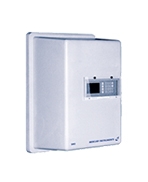
- - MicrotracBEL
- - Grabner
- - Iludest
- - AD Systems
- - Porometer
- - Fueltech
- - Orbis
- - Hydramotion
- - Gibertini
- - Mercury Instrument
- - Paragon Scientific
- - Rubolab
- - Normalab
- - Green Lab
- - Tanaka
- - Forza International
- - Carbolite Gero
- - Adscientis
- - 흡착 (adsorption)
- - 석유화학 (petrochemical)
- - 열중량분석 (TG)
- - 멤브레인 (membrane)
- - 증류 (distillation)
- - 점도 (viscosity)
- - 와인학 (oenology)
- - 실험실 (lab instrument)
- - 촉매특성평가 (TPD/TPR)
- - 연료전지성능평가(Fuel cell)
- - 반응기(Micro-Reactor)
- - 가스분석기(Mass spectrometer)
- - 수은분석 (mercury)
- - 표준시약 (CRM, SRM)
 |
SM-3 Mercury Stack Gas Monitor |
Continious emission monitor (CEM) for mercury |
|
| Features | |
|
##Approved by TÜV (published in GMBl Nr. 33/1999) ##Detects elemental, ionic and bound mercury ##True continuous measurement (no measuring cycle) ##No wet-chemistry - no use of reagents ##Maintenance-free solid state catalyst ##Range 1 ... 45; 0 ... 75; 0 ... 500 µg/m³ Hg (others optional) ##Corrosion protected rugged construction ##Compact size, mobile operation possible
ApplicationsThe SM-3 Mercury Stack Gas Monitor is used for continuous monitoring of mercury in stack gas. Bound forms of mercury like HgCl2, HgO, HgS and particulate mercury are detected as well as elemental mercury. ##Municipal Waste Incinerators ##Sewage Sludge Incinerators ##Hazardous Waste Incinerators ##Cement Production ##Coal Fired Power Plants ##Thermal Soil Resanitation Plants ##Wood Combustors Using Recycled Wood ##Metal Recycling Furnaces
Operating principleA sample gas stream is taken from the duct through a heated sampling system. The gas is drawn through a high-temperature particulate filter and subsequently enters the reduction unit. In this part of the analyzer a thermo-catalytic reduction of ionic and bound mercury is performed. Elemental mercury vapor is formed as a result of this transformation process. The gas is then dried in a maintenance-free peltier cooler and fed to the mercury detector where the mercury concentration is measured with the so called "cold vapor atomic absorption spectroscopy (CVAAS)" method. The high surface temperature of the gas entry filter guarantees that mercury is thermally completely desorbed from particles and thus also detected. Mercury Instruments
Design featuresAll surfaces coming into contact with the sample gas are heated to temperatures >180°C to prevent any adsorptional loss of mercury . The sample line is made of perfluoralkoxy (PFA), a material which shows extremely weak interaction with mercury vapor. Sampling and reduction are performed at temperatures far above the dew point. Therefore no condensate is formed before all mercury is in elemental state. This minimizes signal noise and avoids nonspecific peaks. The SM-3 avoids to use any gold collector for mercury preconcentration thus giving a very fast response and providing results continuously and in real-time. Possible problems connected with "poisoning" of the gold surface are thus eliminated. The straightforward analysis avoiding wet-chemical sample treatment and avoiding a gold trap ensures high reliability and low maintenance. To prevent the instrument from being plugged up by dust-particles, the SM-3 has a self-cleaning filter system which is operated by compressed air. The cleaning function is automatically activated every hour and is a matter of seconds
Easy to operateThe SM-3 is operated via a waterproof membrane keypad. All inputs required are selected in a readily understandable menu shown on the graphical display. It is also possible to initiate functions like zero adjustment and calibration check from an external computer.
Low maintenance and low costs of ownershipThanks to the new thermo-catalytic sample treatment method no reagents are required. Compared to first generation instruments employing wet chemical sample preparation methods, the SM-3 features clearly increased reliability and requires only minimum maintenance. This results in particularly low cost of ownership and maximum availability.
Sampling systemThe sample gas is extracted with a stainless steel probe and conducted through a heated tube to the analyzer. The entire sample line is made of perfluoralkoxy (PFA), a material guaranteeing a minimial memory effect. The dimensions of the sampling system mounting flange are customized (for example DN 80/PN 6 or ANSI 3"/ 150 lbs). As the SM-3 is a compact-sized and low-weight device, it may also be used for mobile applications. Installation is easy and done in a short time.
The importance of continuous mercury emission monitoringMonitoring of mercury emissions from stack has become a global issue. More strict regulations by authorities as well as the public claim for a complete surveillance of incinerators have caused an increasing interest in continuous emission monitors (CEMs) for mercury. For the potential user of such systems it is important to find a reliable and economic solution. First generation CEMs for mercury were based on the automation of known laboratory methods. This resulted in high maintenance costs, unreliable operation, oversized and heavy construction and last but not least a high price. |
|





